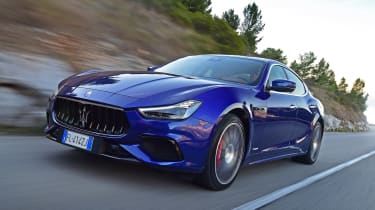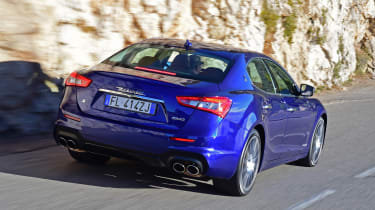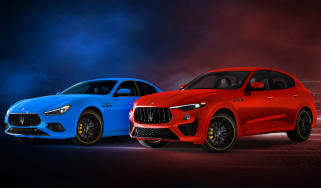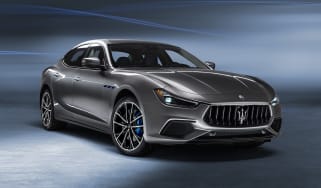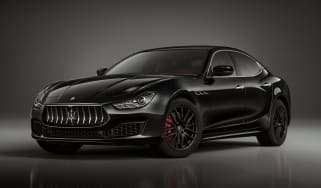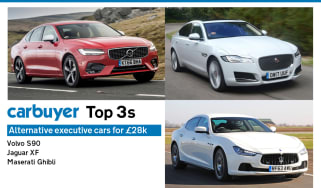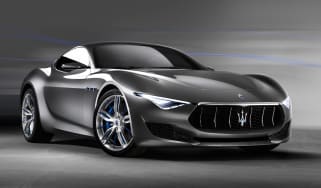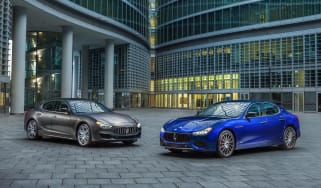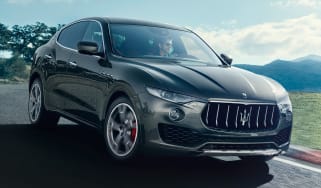Maserati Ghibli saloon review
“The Maserati Ghibli is hugely alluring in many ways, but it comes with a higher price tag and more compromises than other large executive saloons”
Pros
- Exclusivity
- Powerful and fast
- Stylish looks
Cons
- Cramped rear seats
- High servicing costs
- Unproven reliability
Assuming you’re looking near the top of the large executive saloon class, the Maserati Ghibli is a rival to the BMW 5 Series, Mercedes E-Class, Jaguar XF, Volvo S90 and Audi A6. We say ‘near the top', because unlike its key German rivals, the Ghibli is only available with a range of very powerful petrol engines and in high-spec trim levels. This isn’t a problem if you’re looking at a well-specced Mercedes E350d, for example, but it’s worth knowing there isn’t a £35,000 version of the Maserati – it’s all or nothing, with prices starting close to £60,000. In fairness though, Maserati would like you to see the Ghibli as a coupe-like model like the similarly expensive Mercedes CLS and Audi A7.
Either way, Maseratis have tended to appeal to buyers’ emotions rather than their spreadsheets, and the Ghibli certainly looks good enough to set pulses racing. In late 2017, the car was heavily revised, with Maserati saying the changes made it around 70% new. The bodywork was redesigned to reduce drag and it looks sharper and more elegant than before. Adaptive LED headlights were also added, with an automatic main beam.
The engine range is also appealing. Although the 3.0-litre petrol is simply too thirsty to recommend, the smaller 325bhp four-cylinder 2.0-litre petrol engine, which features mild-hybrid assistance, is the most efficient of the line-up. This returns around 33mpg, which, while reasonably palatable, is a little off the pace compared to similarly specced versions of the BMW 5 Series and Audi A7, which can manage over 40mpg.
In 2020, the V6 diesel engine was discontinued from the Ghibli range.
At the top of the Ghibli line-up, the Trofeo model is powered by a twin-turbocharged 3.8-litre V8 engine that produces 572bhp. It’s billed as a rival to performance saloons such as the BMW M5 and Mercedes-AMG E 63 S, and manages 0-62mph in 4.3 seconds.
On the road, slight compromises continue. Despite an electric power-steering setup, it’s not as good to drive as rivals, as it always feels rather heavy and has a jittery ride, even with the optional adaptive ‘Skyhook’ suspension fitted. Get it on the right road and it’s great, but the Jaguar XF and BMW 5 Series are still better to drive.
Practicality is another problem, as the Ghibli’s back seats and boot are smaller and tighter than the BMW 5 Series’ and Mercedes E-Class’. Still, the dashboard design will be a tonic for anyone tired of serious executive saloons’ staid and sombre interiors. It’s not a riot of colours and illogical switches, but there’s more vigour and style than usual in this class of car. A facelift improved the infotainment system slightly, though, while a five-star crash-test rating from Euro NCAP means the Ghibli takes safety suitably seriously.
If it sounds like we’re being overly harsh on the Ghibli, that’s because we’re looking at it in the cold light of day and in direct comparison to its rivals. If you’re taken with the looks, the badge and the Italian allure, you won’t give two hoots about the competition: you’ll be too busy being smitten by the Ghibli’s charms, warts and all.


